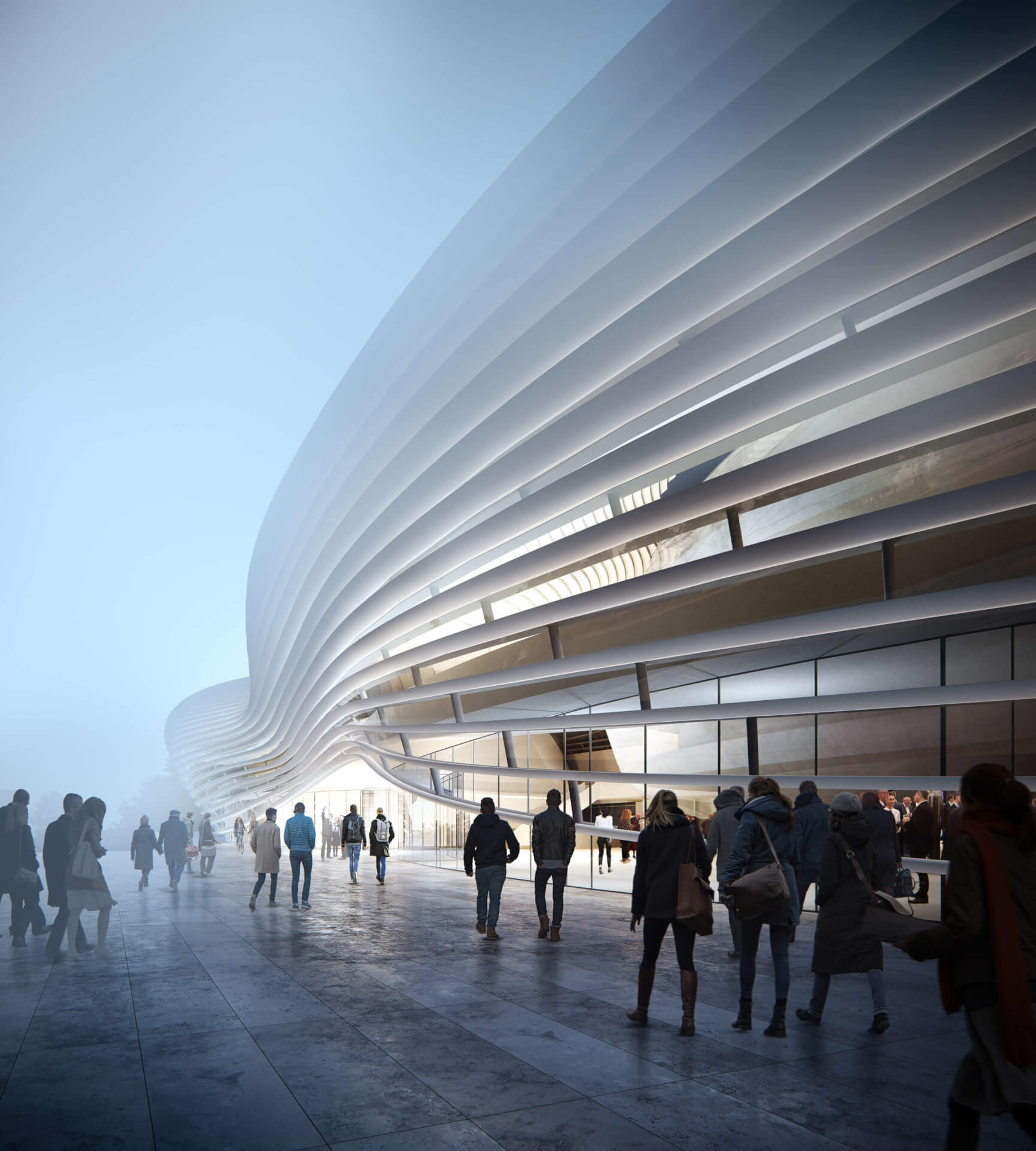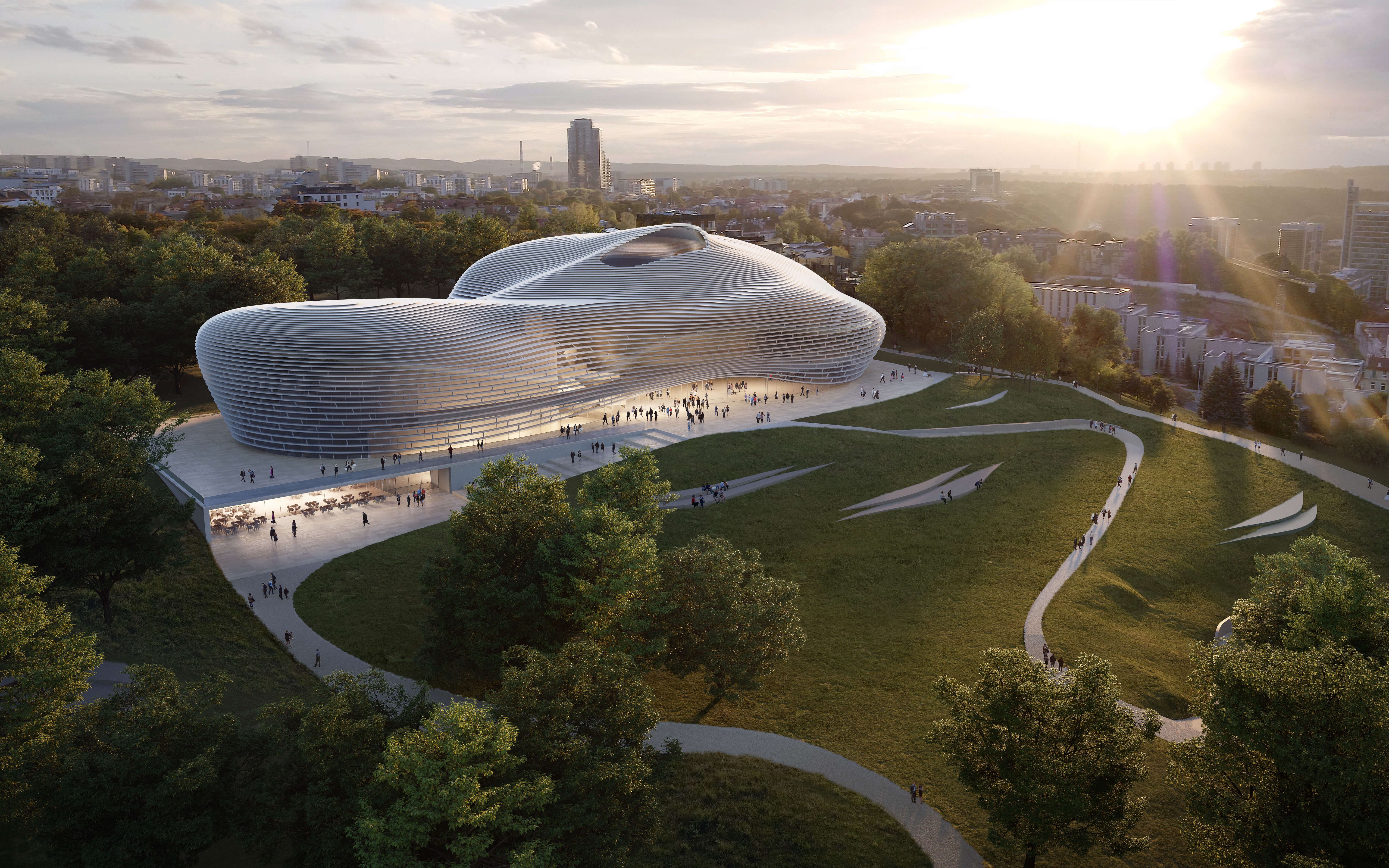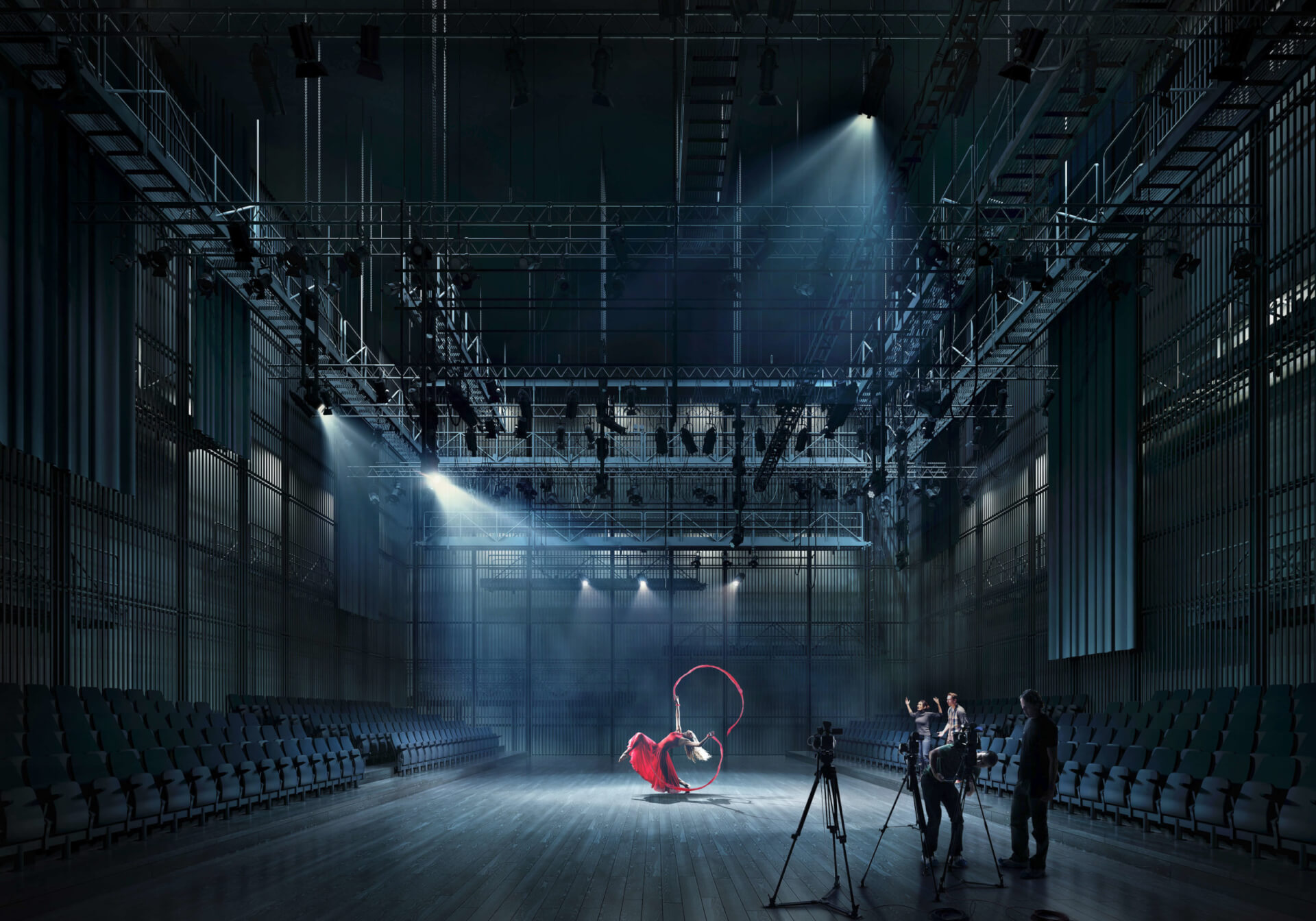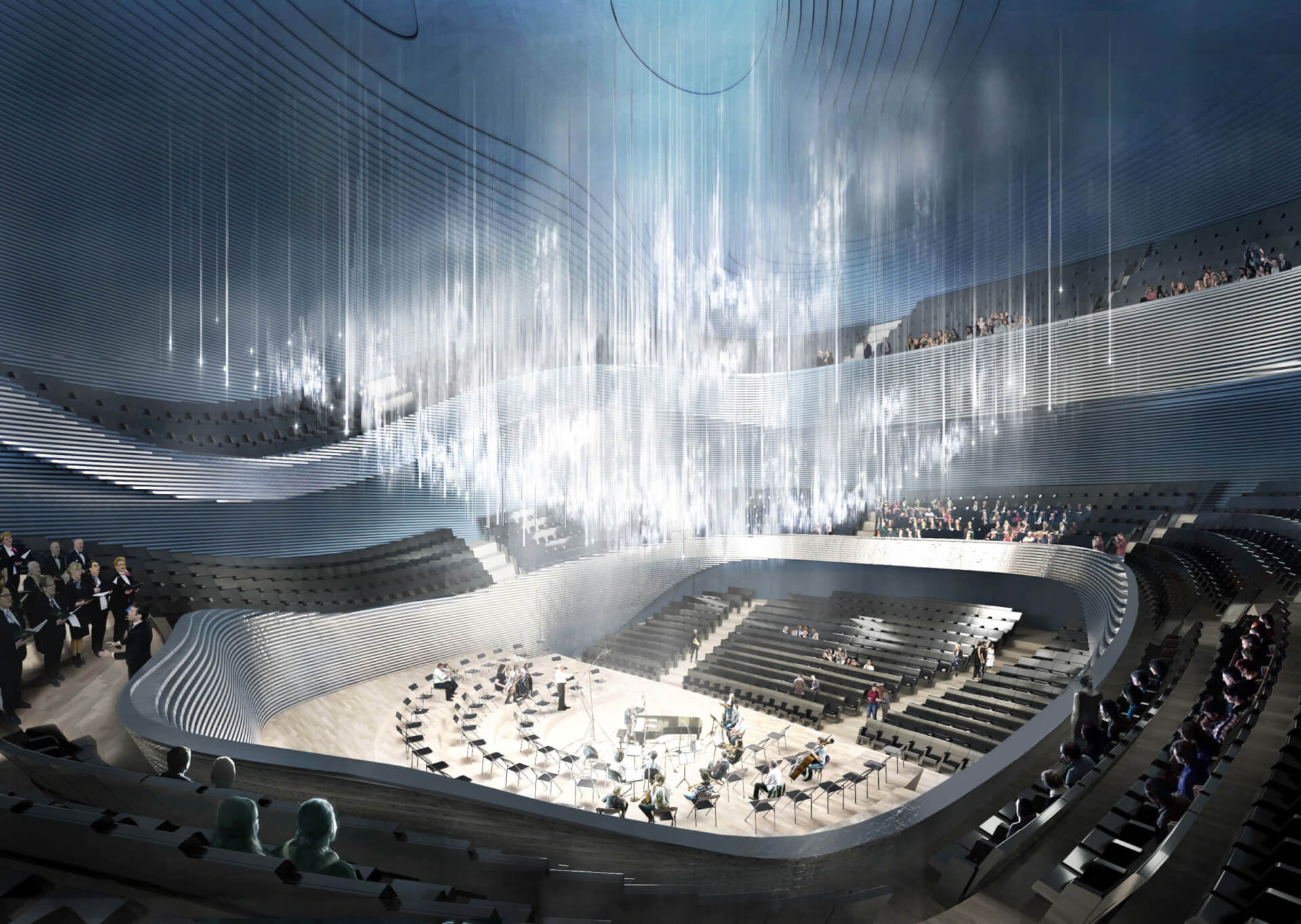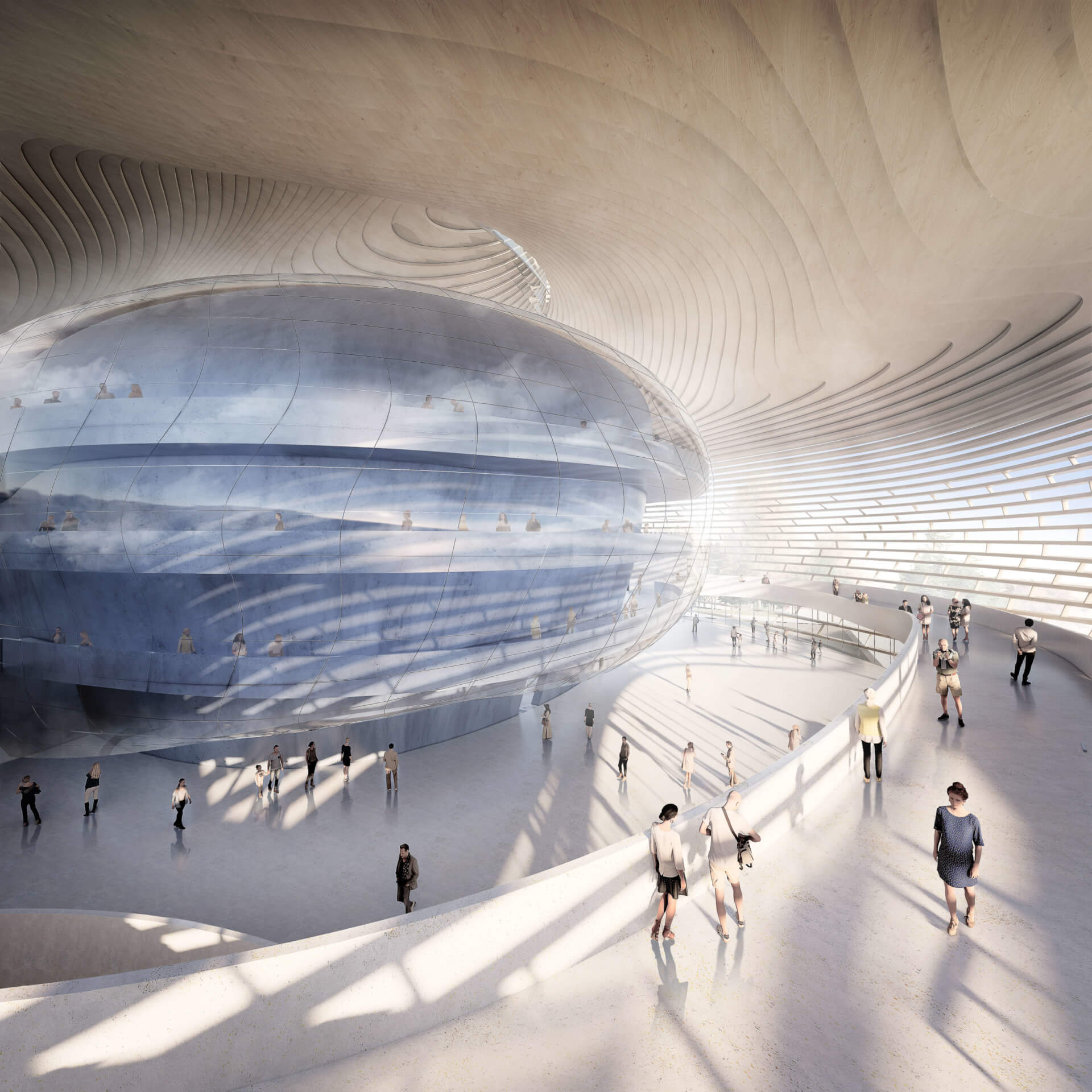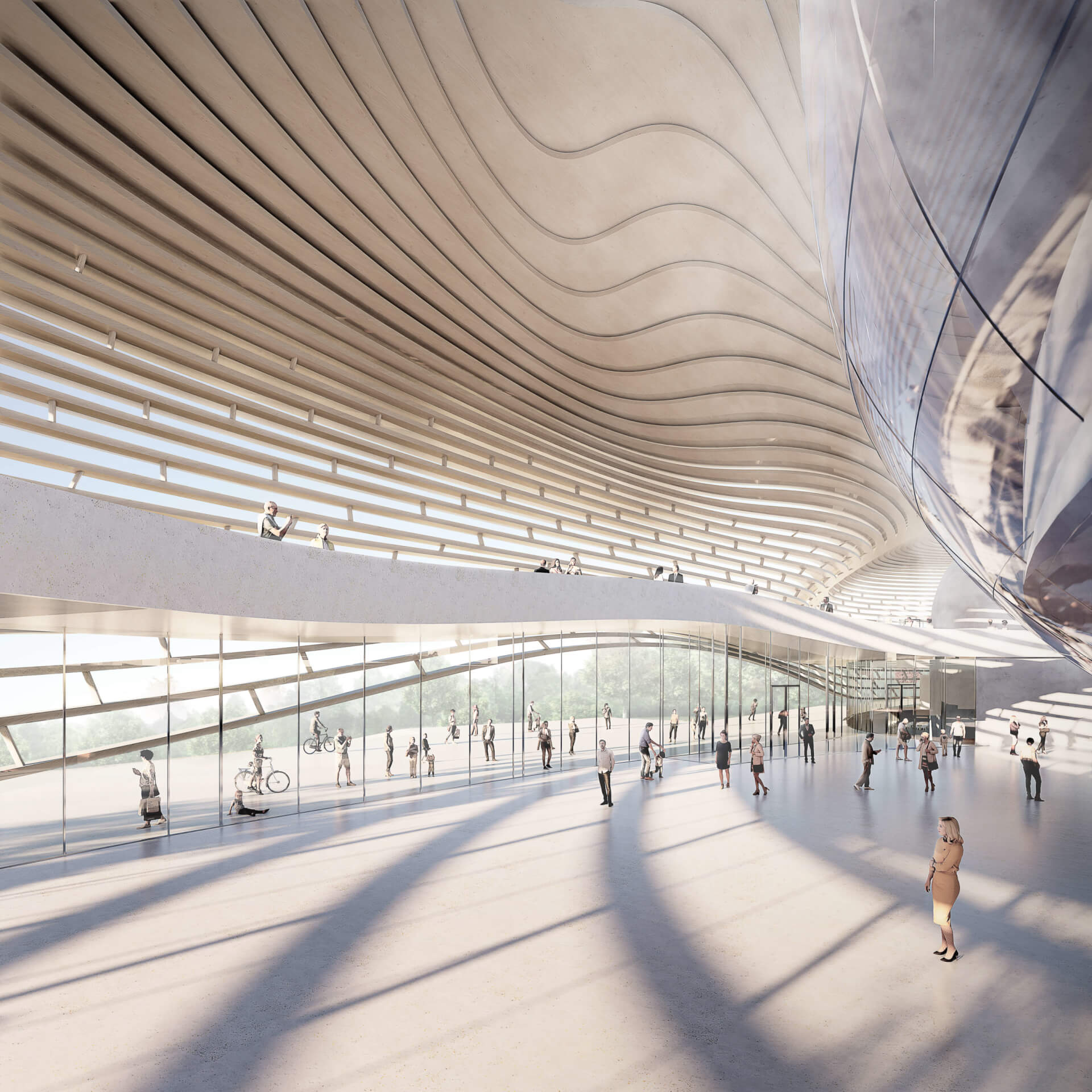concert hall
First Look. Delicate, milky clouds shiftlessly, as if carefree, soar over the city. Every so often caressing the tower of Gedyminas Caste, tandem they follow the sinuous current of the river Neris. Rising and falling, flitting over church towers, they vanish somewhere over the city square only to reemerge above the park, their wispy presence stretching over the silhouette of the city. Picturesque clouds with their vague forms may seem illusory, indifferent perhaps, casting a romantic spell on the cityscape at large. A moment to capture with the snap of a shutter or fine watercolor strokes on a painter’s canvas.
One of these billows could gently rest on the hillside of Tautos Namai, casting a subtle mist as it settles in the green softness of the park slope. Here, among treetop billows, parkway alleys would softly wind across luscious meadows as children would play throughout. No jarring form would disrupt the harmony of this landscape or interfere with peace of this picturesque vista. Genius loci – the elusive spirit at the heart of this venue prompted our bold though arduous vision: a cloud-like construction.
This idea as the crux of our concept. A cloud is the center of thought, the source of understated form and ephemeral curves. And though our vision resulted in a closed form, it is neither constant nor conclusive. The
mass transforms with a shift of light, a change of seasons or perspective of our point of view. It is something of a whimsical cloud which alters its shape from moment to moment. Against the vast backdrop of Vilnius, National Music Hall stands out with its glimmering, white formation and vague outline. One among many clouds.
Strolling Around. From the foothills of Tautos Namai three bright trails wind upwards. Each traces a path of subtle and congruous curves with the innermost intently meandering in search of the gentlest climb. Inside the turns of rolling pathways, as in a winding river, oblong benches form inside the arching hollows. providing respite for the weary climbers. On the other side of the bend, the edge of a soft gravel and white pebble lane disappears into the lush greenness of the the grass. Here and there, tear-shaped sunlit terraces are obscured by the rough grasses of uncultivated lawns. None of the trails lead there. Each climber must find the way to his favorite viewing terrace.
The intention is to keep the park simple and natural, without elements of unnecessary intervention. All trees would remain along with wide open spaces that would not only display our building but also emphasize the scenic view of the city. Open meadows, if needed, would provide space for miscellaneous gatherings and events.
Close-Up. Approaching the building, the mineral alleys transform into light marble plazas – one in front of the restaurant, the other just above, in front of the main entrance. From this perspective, the structure takes on an undoubtedly tangible form as it continues to shimmer with its various facets, teasing with shadow and light. The radiant exterior made of glistening marble rises and falls, overhanging. Each side showing a different facet, another face. Someplace transparent, closed somewhere else. The mesh facade is an ascending vertical gradation – from large openings at the bottom to an entirely closed-in roof structure. It is this solution that allows the spaces to permeate, shaping the various views both from the inside as well as the outside of the construction. The dynamic silhouette of the National Concert Hall musical cloud yields a great many unexpected settings and frames that comprise this one of a kind construction.
Functional Sculpture. The concert hall is a spectacular expanse free from the restrictions of cubic geometry. The form results directly from the quest for an abstruse shape of a cloud, embedded in the natural landscape of Tautos Namai. Inevitably, the interior is as startling and unexpected as the outer sheath of the structure. The central surface area of the foyer is located at the main entrance level in relation to the exterior plaza space. It’s completed by sectors with varied functional character and located on several levels.
The floor just below ground level houses the foyer part with the lowest entrance to the small concert hall and a restaurant, accessible irrespectively, from the park. A cuboid mass, like that of a black box is encapsulated in a massive construction of softer forms. By placing one box inside another, all functionally and acoustically necessary facilities such as vestibules, artists’ entrances, dressing and control rooms along with backstage amenities were placed around and connected to the central stage and its auditorium.
Stretching above the main foyer is ample exposition space along with winding overpasses connecting various levels and function areas. There are countess paths intended for the viewer. Visual frames to be discovered here by music lovers will always differ depending on the time of day or selected trajectory of movement.
Inside the concert hall, light and luminance reign supreme from the presence of lustrous terrazzo to the use of off-white architectural concrete and glass. Together, they form a tranquil and harmonious color scheme free of sudden contrasts or accents. The sculpture and character of the foyer space are defined by its distinctive and autonomous form, the interior rendered warmer by its light, wooden finish. The flowing formation of the mass, built like a hill from subsequent contours, toys with light and shade, flickering in sunlight, casting spectacular reflections, imparting the delicate colors of the interior with a certain definition and vitality.
The sole element eluding the rigor of high key aesthetics is the mass of the main concert hall. Its irregular form and hue of royal blue peeking through the glossy, somewhat transparent filter instantly points to the heart of the construction, its fountainhead, the epicenter of all effort and force. The symphonic concert hall seems like an eternal cloud. An enigmatic, vague entity captivating with its liveliness, exuding something obscure… Sound?
The main concert hall entrance is at the ground level, that is where the hazy, ephemeral glass billow gently rises its sheath. When a music lover finds himself between a cloud filter and the foyer wall, he will begin to permeate into another realm. He will quiet his senses, only to open them to the richness of the musical experience ahead. The viewer’s way to the subsequent levels of the auditorium leads through ramps that gently encircle the overall area. Here, transit time is also a time for soothing the senses, taking a break – a meditation of sorts. With most stimuli left behind the translucent filter, we are ready to converge with the music.
Symphonic heart. The initial impression strikes a powerful chord. A sensation both malleable and spatial. An impression of deep blue summer sky cocooned inside an irregular mass. A feeling of closeness. Closeness to the momentous, the extraordinary, that which resonates from the nucleus of space, that which forms there and rises above like a cloud… This space is a microcosm. A firmament. An irregular arch of the space-time continuum which envelops us in its soft, mysterious darkness that unlocks our senses to the magic of music. Here, we dive into the depths of an ocean. A world apart.
Due to an unparalleled acoustic advantage, the plan of the concert hall assumes a “vineyard design”. Its irregular form and terrace-like arrangement of balconies reduce the spreading of reverberation. No wall is parallel to another and the balconies are shaped to eliminate reverb by diffusing sound waves wherever possible. The innermost solid emerged as an intact form, then was hollowed by a sound wave. Wooden contours aid in the formation of acoustics within the auditorium: they’re at once, a full reflective bouncing shield as well as a sheer acoustic mesh, obscuring the more refined musical notes.
And even if, as written by Artur Schopenhauer (Notebooks 1957-1972) “Music… could, to a certain extent exist, even if the world did not”, sound enclosed in an open, one of a kind space, would still remain free. The setting is only a well-tuned instrument that will resonate on the music scene of Europe and the world.
 all
all 
